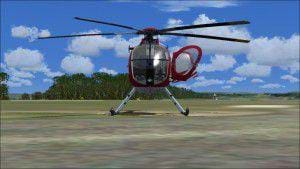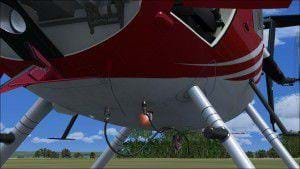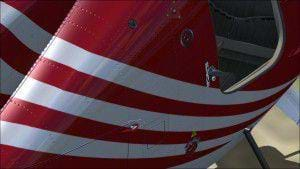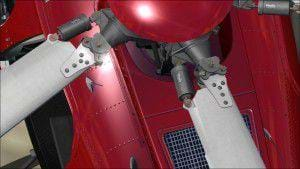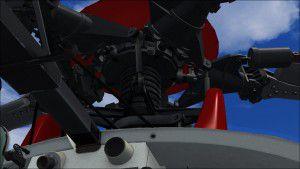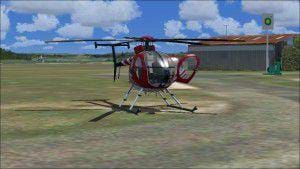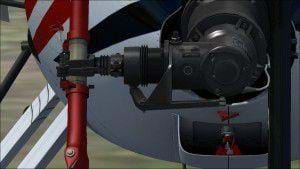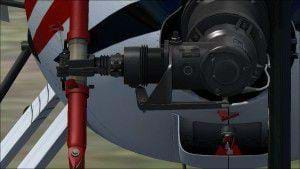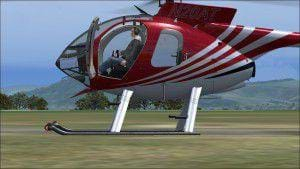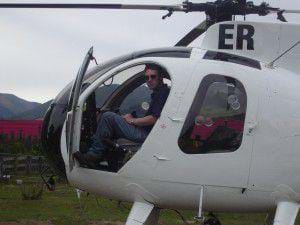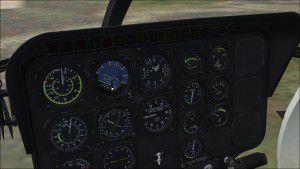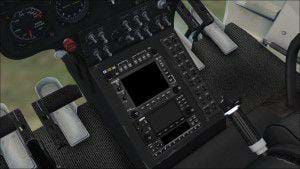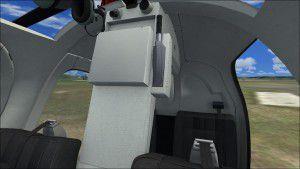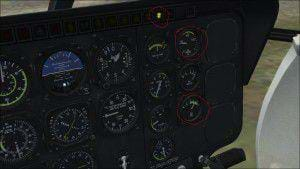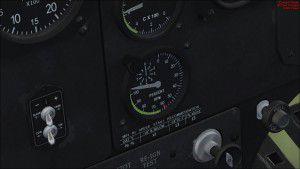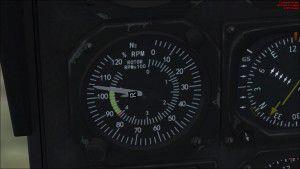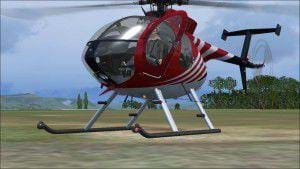Program history
The Hughes 369 / MD500 series of helicopters is one of the most recognizable helicopter types in the world. Developed as the OH-6 for the US Army’s LOH program by Howard Hughes’ design team of Ray Cooper, Clyde Jones and Harold Hirsch, the OH-6 was a unique aircraft the likes of which had not been seen before. The other bidders on the contract were Bell and Fairchild Hiller. Howard Hughes got a hold of Fairchild Hiller’s costs and submit a much lower bid to snag the contract, reportedly taking a $100m loss on the first 1400 airframes. The aircraft arrived on the battlefield in Vietnam in 1966 and was loved by pretty much everyone who came into contact with it. Although Fairchild Hiller’s FH1100 was the first turbine helicopter available for sale on the civilian market, Hughes’ demilitarized version of the OH-6, the H369C almost immediately became the preferred choice for the civilian market. In 1976, Hughes revealed the uprated Hughes 369D with a more powerful engine, new tail and a five blade rotor head. This was followed in 1982 by the 369E with again, a bigger engine, slightly refined tail, slightly redesigned cabin and a more streamlined nose.
In 1985, the ‘F’ model was certified. Designed as a ‘hot and high’ machine, it featured a 650hp Allison 250-C30 engine but apart from this it was almost indistinguishable from the 369E. In January 1984 while the aircraft was in development, Hughes was sold to McDonnell Douglas and the 369E and F became the MD500E and MD530F.
The Milviz MD530F: revisited
This is the second review for the Milviz MD530F that I have done. The first was for my ‘home’ forum not that long after the model had been released. This is an updated review that takes into account some of the changes that have been made since. You can read the original review here.
Download and installation
I bought the Milviz MD530F on special from simmarket.com for 28 EUR. One thing with Milviz is that they say all anti-virus software must be disabled for download and installation. This is a bit of a pain in the rear end but OK, I’ll play the game. File size is currently 303MB and I get an email every time the file version is updated. Installation is pretty painless. There is one installer for FSX, FSX-SE, Dual install and P3DV2 and V3. Nice and simple, the way I like it. The installed files equate to 2.87G with 18 different liveries and in addition to the files in the sims directory, places the configuration manager on the desktop. If you have other Milviz products, then you’ll be familiar with this little tool. The options for the base product are: doors, wire cutters, hook, pilot visible, additional radios, ability to configure for cold and dark or ready to fly. These options can be configured for every different color scheme. Great little system I think.
Model and textures
Overall, the models proportions are about right. There are some nice details on little things like the hook, wire cutters, door pins etc. The textures on all of the different color schemes are very crisp and realistic. Probably a bit too much shine for my liking but overall very nice.
Note the intricate modelling on the fuel and oil caps in the last pic. The kick step I think is only in the textures. It shows the aircraft as having two fuel tanks which is an option out of the factory however the configuration only has one tank. Given how thirsty the C30 is and that the standard tank is only 240L, a number of 530s have auxiliary tanks.
Really nice detail on the rotor head. The collective moves the swash plates as it should however, the cyclic doesn’t.
Unfortunately there are issues with the model itself. The above pic shows negative pitch on the blades. This is incorrect for the 500 series. I also think after months of looking at it that the blade chord is too large.
Tail rotor controls don’t line up. The first pic above shows full left pedal. Everything is OK apart from the Pitch Links not lining up with the Spider. The second pic is neutral pedals. Note the bell crank and the pitch links aren’t lined up. The manufacturer’s stamps are blurred but that’s no big deal.
The first pic above shows that the pilot is too small. Yes, the cabin was enlarged slightly on the E model but not that much. Note in the second pic how much of the cockpit I take up and I’m not a big guy. Interestingly, the model has dual controls fitted which I think should be an option. The pedals on the right hand side are on the farthest setting and the pilots are on the nearest setting. Also there are some little details missing like the collective guide.
Interior modelling is pretty good. The new 530s seem to have this standard instrument panel layout. Although, not many have a radar altimeter and HSI, in fact, not many helicopters have these. The older 530s from the 80s have a slightly different layout. The interior is a typical of a helicopter just out of the factory. It’s clean and tidy with no signs of wear and tear. Not really how I like it but it’s not a big deal.
Overall, a pretty good representation of the 530 but it could do with a bit of a tidy up.
Systems
One of the reasons that the 500 series have been so popular through the years is that it’s a simple helicopter. One of the requirements when it was designed was that a single engineer could work on it in the field with hand tools. The aircraft has a simple fuel system, unboosted flight controls; few moving parts in the rotor head, simple electrical system etc. There have been many people over on the Milviz forums complaining that they can’t start the aircraft. I had some issues when the aircraft first came out also, although some of the updates have sorted this for the most part. If you try to start it like the real aircraft, then it won’t start though. The fuel shutoff collar is located forward of the throttle. Pushing the collar forward and rolling the throttle back towards you shuts off the supply of fuel to the engine. This is the condition that the start must be initiated in. Pushing and holding the start button on the end of the collective starts winding the compressor over. At 15% you start to roll the throttle on until the engine lights off. Monitoring TOT, you keep winding the throttle on to keep the temperature up around 700 / 750 until N1 (compressor speed) is 58 to 61% at which point, the engine is self-sustaining and the starter can be released. On Milviz’s 530, the start pump needs to be on. On the real thing this isn’t required. The fuel shutoff collar seems to inhibit the starter so you have to roll the throttle open and back to the stop without depressing the collar. Hitting the starter starts everything turning over alright but if you leave the starter depressed, throughout the start cycle, it won’t ever reach self-sustaining. According to Milviz, it must be released after 15 seconds. The real limit is one minute. On any aircraft, the first thing I look at after start is the oil pressure. On the real 500, oil pressure should be above the red line well before the end of the start sequence. On the Milviz one, the oil pressure won’t ever get above the red line until the throttle is advanced to flight. The other thing is that the ammeter always seems to be showing a charge, even when the aircraft is being started. After watching this for a while, I think this has been confused with a voltmeter and is showing battery voltage instead of amperage. None of the lights will work without the generator being on either. See photo below.
The real aircraft has electrically actuated trim to relieve aerodynamic forces on the controls. This is controlled via a hat switch on the top of the cyclic. Milviz have implemented a force trim type system instead. You can assign a button on your stick so that when you press it, you don’t have to hold the stick forward. This is great. I wish more developers would implement this in their add-ons.
When running at flight idle, there seems to be a problem with N1. When rolling the throttle on, N1 goes up to 110% and possibly beyond. Definitely shouldn’t get close to that high until you get close to maximum altitude.
Also at flight idle, N2 and NR seem to be split. N2 is again, up past the upper limit and NR is sitting about right. If you snap the throttle back to ground, NR moves at about the right rate but N2 lingers up off the gauge and eventually drops back to idle. I’ve tried the ‘beeper’ for the governor and this doesn’t seem to do anything. As a side note, there should be some markings on the gauge to show the proper range for NR.
Unfortunately, when making aggressive maneuvers, N2 and Torque don’t move at all. Anyone who has flown helicopters for real will tell you that executing quick stops and tight turns will make N2 and NR will move. This tie in with the flight model that I discuss below but it would have been really neat to have the needles move around a bit and the noise change.
Overall, a bit of a mixed bag. Milviz have tried to make it accurate and they advertise it as having fully realistic starts, however, this is simply not the case.
Sounds
One of the things about a 500 is that if it has a two bladed tail rotor, you can hear it coming from miles away. It is one of the most unique sounding helicopters out there. Any 500 add-on has to get this right. Bearing the above in mind, hitting the starter, the engine winding up certainly sounds like an Allison 250. The sound for the start seems to be all one file so that if you abort the start the sounds just continue. There’s obviously a few different sounds running all at the same time and one of them is clearly from a Bell 206 or some other two bladed helicopters. There is a ‘swish swish’ sound that the 500 just doesn’t make. Once everything is stabilized, the sounds are a lot better. The noise inside at ground idle is OK, probably a little quiet though. Bringing up to Flight, externally, it gets the tail rotor buzz going and it really sounds the part. Internally, it’s not too bad but I think the transmission whine should be louder. There is really bad looping at flight idle where there is actually a gap. Doing flybys and things like that, it does sound the part. On shutdown, the irritating ‘swish swish’ comes back and really spoils the experience.
Overall, a mixed bag again unfortunately. Given that the 500 sounds so distinctive, it would have been really nice to have a more realistic sound package.
Flight dynamics
Flying the 500 is one of the great joys I have had in my career. It is a really fun aircraft and it’s been said that you put the 500 on and wear it. It’s true. You can push it right to the limit and haul it back in. If you go past the limit though, it’ll bit you hard. Being a military helicopter, it’s well built, maneuverable and fast. Quite often, standing the aircraft on its tail won’t stop it. It’s a really slick machine. You muscle it around the sky. If you want to make it fly, you have to move the controls.
It’s important to note here, that the aircraft doesn’t employ an external flight model so it’s never going to be on the level of Dodosim’s 206.
Milviz has actually done an alright job of replicating the experience. Picking up into the hover, you have to use a fair amount of left pedal and it’s nice and stable. Going into forward flight, the amount of left pedal required to stay straight reduces until about the 60kt mark where it flies in balance with level pedals. This is about right from my experience. It has plenty of power but it does have its limits which is something that has been improved upon from previous versions.
Coming back to the pad, it feels like a slick machine and if there isn’t much wind then it takes a bit to slow down just like the real thing.
There isn’t much to say about flying it considering it’s running on an internal flight model. It’s actually really quite good fun and it reminds me of flying the real thing.
Misc
Autos
If you manage to cook the engine then the 530 will auto quite well. Full down on the collective, a bit of aft cyclic for 65 to 70kts and balance. It seems to have about the right glide profile. Not a huge amount of inertia in the system but it’s enough to execute an autorotative landing.
Lighting
For some reason, the lighting looks rather cartoonish. I’m really not a fan of this look.
Add-on Package
There is an add-on pack for the aircraft that adds, pop out floats, cargo pod, night sun and the FLIR. In addition, there are a few different avionics setups. I don’t own this package but just from looking at it, there are a couple of issues. If the 500 series is fitted with floats, pop out or utility, the aircraft gets fitted with skid tube extensions. Without these, the aircraft would just tip over backwards and put the tail in the water. The model doesn’t have this. The cargo pod sits outside the skids. Every cargo pod for the 500 I’ve ever seen in real life or in photos sits inside the skids. The FLIR and Night Sun are outside of my area of expertise but I will say that they don’t look out of place.
Documentation
Milviz have included a partial copy of a real 500 flight manual that has had their own installation instructions, configuration etc. at the start. It’s a nice touch but unfortunately, it’s a C model manual complete with C model instruments, speeds, temperatures and pressures.

